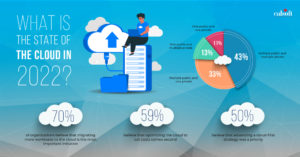The third mini-blog in this series focuses on the trending technology called VoIP (Voice over IP).
Voice calls have increased dramatically. In fact, Verizon reported that, in the USA, it was handling 800 million wireless calls per day on weekdays. This was more than twice the highest daily peak volume they experienced usually. Clearly, people are talking more to family, friends, and co-workers. This is reflecting in the VoIP space too, as conversations span locations.
SaaS-based VoIP solutions are also increasingly being adopted by SMBs and are witnessing a significant increase in their adoption as co-workers substitute calls with team members and supervisors for conversations. Comcast saw a 212% increase in VoIP and video-conferencing traffic, while AT&T reported wireless voice minutes up by 23% recently.
Telecom company Airtel, which recently launched Wi-Fi calling, has already crossed 1 million users. Their Voice over Wi-Fi calling feature allows users to make high-quality calls to any network – at no extra cost. Users can avail the facility through Airtel’s broadband channel – without having to install any app or purchase a dedicated SIM card.
VoIP providers like Cisco WebEx, Vonage, Skype, Loom, Hangouts, Zoom, and many more are opting to deliver free options for basic VoIP, web/video conferencing, and contact center software, without being concerned about profitability. This is helping employees stay connected across geographies and boundaries. As the impact of the pandemic becomes extremely far-reaching, VoIP solutions like Zoom are also allowing schools and colleges to educate students, businesses to ensure effective remote working and host virtual events.
Voice has made a comeback and the availability of Internet bandwidth has meant that a significant portion of that has shifted, perhaps permanently, to VoIP. Of course, the attraction is that since the solution is offered through the cloud, users don’t have to worry about purchasing (or maintaining) heavy infrastructure. They can simply connect their mobile phones to their home Internet network, schedule and attend calls, and drive efficiency.






